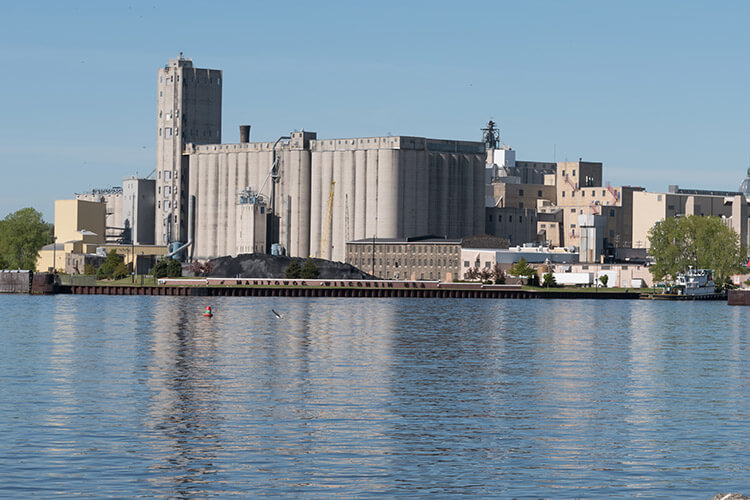American Barley It’s What Makes American Craft Beers the Standard!

Barley Varietals Are the Foundation For Malts
The flavor of beer has many elements – barley, hops, and yeast. It should also be noted there are brewers who attribute flavor of their brands to their water source. Some in the malting industry lament that barley has not received its due when it comes to imparting beer flavors. Hops has been the center of conversation over the past few years.
Whatever your perspective, malts/barley is also about agronomics. More than terroir, agronomics is inclusive of farming practices — fertilizing, grain density, irrigation, climate, and fungicides. Same can be said about producing wine grapes. Nonetheless, growing cereal barley for malting is more than simply putting seed in the ground, watering, and hoping mother nature cooperates.
Like most historical aspects of the U.S. beer industry, it was European immigrants who made it happen, primarily those who came from Germany. These early brewers like Anheuser-Busch, Ruhstaller, and Coors had European roots. As with early hop farmers they too were immigrants. Most of these settled in New York, California, and the Northwest. Barley in the U.S. has a long immigrant involved history. In the late 1800’s Sacramento, with a large German immigrant population, was a major barley and hops growing region and, at the time, was home to the largest brewer West of the Mississippi River.
One of the oldest malt artisans is Briess Malt and Ingredient Co. headquartered in Chilton, Wisconsin. The business was started in Czechoslovakia in 1876, and the third generation immigrated to the United States in the 1950’s. They have been producing malts for the beer and food industries for almost 150 years. The company is still family owned with the fourth and fifth generations involved in management, and its products are distributed worldwide. Briess is best known for specialty malts which add characteristics including flavor and color to the finished beer.
Briess and other maltsters have benefitted from malt-forward beers, which have been boosted in popularity by craft brewers such as Samuel Adams, Alaska Brewing, Firestone Walker, Stone Brewing, Sierra Nevada, etc.
Malting companies also work with homebrewers, brew pubs, and micro-brewers. “You never want to bet against small producers because that is where many successful craft brewers get their start,” says Rick Redd, Regional Manager for Briess Malting. “Because we are a “specialty” maltster we also get calls from the macro-brewers.”
Another large U.S. owned malting company is Rahr Malting, which is also privately owned. Many of the other producers are large corporate agriculture entities. About a year ago Cargill agreed to sell their malting operation to Axéréal of France.
In conversations with malting companies it is apparent the business requires a lot of capital. “We commit capital to facilities, agronomic studies, research and development, and quality control to constantly produce quality barley/malt products for our customers; if you’re not innovating you falling behind,” says Redd.
It’s All About Innovation Through Chemistry
Innovative craft beer flavors are not simply the act of mixing: malts, water, adding hops and yeast and voilà, you have your craft beer. As a consumer of craft beer, it might be fun to understand how we get to the place called “Voilà”. After all, craft beer is about interesting flavors and aromas, and we know that barley is the ‘soul’ of craft beer (at least that is what maltsters proclaim).
Barley is the premier cereal grain for making malts for beer because of its attributes in the brewing process, although wheat, oats, corn, and rye are sometimes used. For example:
- The character of barley husk adds to the filtering process in making wort.
- Enzymes resulting from the malting process do a great job converting starches in the grain into consumable sugars.
- It is easier for barley to germinate, which is required to turn barley grain into malts; far more manageable than other grains such as wheat, rye, or oats.
- Barley malts add flavor, color, and mouthfeel to the beer.
- Malted barley can be grown with lower protein content, which makes for clear beer.
Without malting there are no sugars for the yeast. It is easy to get confused about barley and malts and other grains that might be malted. Suffice to say, most any germinated grain can make beer. Even a gluten-free beer using sunflower seeds.
Of the four ingredients in beer, water should not be overlooked as a contributor to flavor. Water plays a crucial role in some styles, specific to regions such as Dublin, Ireland. The famous Czech Pilsner beer contributes it success to its water. (German brewer Josef Groll brewed his Pilsner taking advantage of the region’s soft water. Beers using water higher in pH (alkalinity) would typically be darker as the darker grain’s lower pH of the water. Yeast does not function well in a high alkaline solution, so historically brewers compensated by devising ways to manipulate the water that was really a local supply issue.
Barley – Beyond the Basics
“I have been in the beer industry for 30 years and one thing I have learned from craft brewers is that consistency is of paramount importance. Consistency is all about maintaining quality throughout the process – from research, to seed production, harvest, storage, and finally to malting practices. Brew masters want vendor partners helping them meet product quality,” says Redd.
It is critical for brewers with signature brands to produce consistency in whatever products they make throughout the year. That is why malting is a science, especially when you move away from commodity barley to specialty barley/malts.
As an aside, barley has two planting seasons and one harvest season. It’s sometimes planted from September to November and is primarily planted from March to May. Harvest occurs in August/September. Since beer is produced throughout the year, how do brewers ensure they always have access to malt supply? Short answer, “maltsters store grain in elevators for as long as 12-14 months, and then it’s malted as demand dictates. That warehousing process is a highly sophisticated and expensive operation that most consumers never think about,” notes Redd. Demand isn’t only at harvest time.
Obviously, the primary ingredient to start making beer is barley malt. Over the past few years hops has held a prominent position when discussing flavors and aromas in U.S. That may be partially attributed to successful marketing campaigns that brand patented hop varietals.
Barley is understood by brewers for inherent compounds levels such as enzymes, sugars and malting profiles and proteins. And most barley for brewers is based upon specifications dictated by brewers and how that barley performs under malting specifications. Barley specified by varietal name is just not recognized as important. Nonetheless, there are 37 patented varietals of barley certified by the American Malting Barley Association today.
“Brewers purchase malts based on specifications of the varietal barley used and on quality standards in malting process. The maltster understands the array of varieties and what malt process they must employ to achieve the dictated specifications from the brewer,” says Dr. Jamie Sherman, Director-Barley Breeding Program, Montana State University.
“They (farmers and brewers) don’t see a value in branding specific barley varietals. A few craft brewers are now sourcing malts based upon region of origin but don’t see a value in a specific varietal. That means some maltsters are using only regionally sourced barley. Most are dictated by a brewers marketing decision. One of the things several seed breeders are working on is to provide some flavor features with a variety e.g. a specific flavor profile as hops does. So far, this goal is still in the research stage. We are malting varieties with different inherent chemical profiles to see if we can give a variety specific flavor,” said Dr. Sherman.
Flavors-Malting is About Sugars, Flavors, Color and Character!
It is not unusual for a brew master to contact a malting company with an idea for a new recipe. After much consulting, a selection of base malts and specialty malts can be recommended and then tested. The refinements to the recipe then will be made. The brewer may have specified color, mouthfeel, aroma, abv, sensory profile, etc. The final decision might be made that a new variety of barley is required. Then starts a 10-year process.
Flavors introduced into beer via malts are extremely complicated. There are more than 600 different compounds in malts. “The chemical structure of barley malts has a lot to do with types of barley, region where barley is grown and brewing process. For sure yeast, malts and hops all interact together throughout the brewing process to produce flavors,” said Dr. Sherman.
Malting is the process of converting starches into sugars. No sugars, no beer.
Malts are a process of getting the barley to start germinating. The process starts by soaking the barley seed in water, and when seeds start to sprout the maltster initiates a process of heating and drying the barley to stop the sprouting process. That is what creates the release of enzymes in the grain to breakdown the starches into sugars and for the yeast to turn into alcohol. This is the major purpose in mashing the grain malt — getting sugars out of the grain.
Any malt used, as a base or specialty application, the process is a blend to get flavors, color, and character.
We are still on flavor.
Here is another perspective on what barley brings to the flavor table. Dr. Patrick Hayes, Crop & Soil Science Dept., Oregon State University, Corvallis, OR, is a leading researcher on attributes of barley relative to flavors. Hayes says, “If the question is: Does barley add to the flavor of beer? The answer must be yes and that alone validates all the research being done on new breeding programs for barley malts.” Here are some of the findings from the 2017 study on barley and beer flavors reported on by Dr. Hayes.
- It is not surprising that barley variety contributions to beer flavor has not been a high research priority. However, certain varieties are acknowledged by some brewers to have notable flavor attributes.
- Terroir impact remains elusive in the beer industry; only recently has the term appeared with reference to cereal grains. Barley has two markets-Cereal (human consumption) and Feed (animal related).
- Data confirms genotypes (genetic make-up) of barely has a significant effect on beer flavor and sensory descriptors (how flavors are described).
- Barley variety contributes to beer flavor.
- Climate, soil types, irrigation, nutrients, pest control and farming management practices contribute to barley flavors.
- Genetic markers do prove barley contributions to beer flavor.
- Variety contributions to beer flavor develop during malting.
Here is the most profound quote from Dr. Hayes study on beer flavors: “In certain beer styles and for some maltsters, brewers, and consumers, the barley contribution to beer flavor will be worth pursuing.”
What Price-Flavor?
Hand-selected malts and hops in the hands of good brewers can make a unique and memorable quality beer. And therefore, crafted beers’ distinctiveness should not be expected to compete on price either. Quality does come with a price, as Gucci said, “quality is remembered long after the price is forgotten”.
Ron Silberstein of Admiral Maltings in Alameda, California comments about the cost of flavor quality in craft beer, “From the outset, Admiral understood that we couldn’t compete with ‘commodity’ barley malt on price. A batch of 7 percent abv beer from a 15-barrel system with 1,000 pounds of malt will cost about 13 to 15 cents more per pint,” Silberstein says.
“Hops are the spice of beer and it does wonderful things, but it’s not the heart and soul of beer. No malt, no beer,” says Silberstein. “But the barley grower is now starting to understand that through special breeding programs. Barley is starting to lose its ‘commodity grain’ heritage. New varieties of barley designed for each growing region bring forward special flavors and some are produced with an ‘organically grown’ moniker. They bring forth uniquely defined chemical compounds and are being recognized as hybrid’s not commodities. These come with significant higher flavors than a commodity grains,” according to Limagrain Cereal Seed company, a worldwide producer of various cereal grain seeds.
Maybe in the future, consumers will be more aware of barley malt varietals that are used to make their beer and definable flavors from varietal barley grains. Hops is already in this position. Some beer not the hops used by varietal name.
How Big Is the Footprint of Barley/Malts?
Note: The U.S. is the world’s 10th largest producer of barley; Russia and Germany are the two largest.
The largest brewers such as In-Bev and Molson/Coors have their own patented varietals and their own malting facilities. By definition, a craft brewery produces less than 6 million barrels per year and is not controlled by a major brewer. Crafters are the people that contract barley production and set the specifications for the malts they buy.
In July 2020 AMBA (American Malting Barley Association) reported 2019 barley production (feed and cereal types) to total 169,806,000 bushels. The largest producers were Idaho- 54 million bushels; Montana-43 million bushels; and N. Dakota-32 million bushels. Interestingly, malts and malt houses for crafters tend to be regional. In essence, close to where the barley grain is produced and malted. This gives a lot of beer regional styles, flavors, and aromas because each growing region uses barley bred for a regional growing terroir/agronomics. Of all barley harvested in 2020 approximately 50% is targeted to be for malting.
Barley Malts Breeding Research-It Is All About Chemistry
As has been repeated several times, malts are the soul of a beer and are finally getting their due. I recently heard one brewer state that “malt is the new hops,” says Chris Swersey, Brewers Assoc. “Craft brewers as a group cherish the flavors that arise from diverse malts.” What helped bring hops to the forefront are distinct flavors and aromas and some mouthfeel issues.”
Like hops, there are trade groups, universities and private entities that are focused on quality and breeding new barley malt seed. The certifying organization for quality is the American Malting Barley Association. They ensure that their certification of barley grain used for malting is of a guaranteed quality. As noted earlier, the AMBA has certified and approved approximately 37 varietals to be used for malted beverages. However, there are actually approximately 100 barley varieties grown.
In recent research to identify beer flavors –“The Flavor Project” — Effects of Barley Variety and Growing Environment on Beer Flavor— they used selected varieties of barley malts in a highly controlled study. Here are some descriptors participants identified in flavor tests: cereal, floral, fruity, grassy, honey, bready, malty, toast, toffee, chocolate, sweet, etc… Of the three varietals used in the test, defined flavors varied by variety and location. The study noted, “…flavor is usually ascribed to the malt rather than to the variety.” However, without the compounds in barley, malting is unable to deliver flavors.
See a Beer Flavor Wheel: http://www.beerflavorwheel.com/home/
What are some of the issue’s barley research is focused upon?
- Impact of higher yield varietals on flavor
- Structure of the plant itself — for example taller stalks of grain
- Agronomic characteristics – climate adaptability
- Protein content – levels of proteins breed into the plant
- Color
- Disease resistance by growing region
- Drought tolerant
- Two Row versus Six Row –Two Row varieties are most common barley varietal and offer plumper kernels, lower protein malts and lower husk content. But there is still a place for Six Row barley malts.
- Spike structure – Where the grain sits
- Regulating maturity of the crop – winter/spring barley
- Moisture content – Lower is better
- Types of sugars released in the wort
- Higher malt extract
- Lower wort viscosity
The Case for Flavor in Beer
Research is increasing our understanding of flavor attributes in malt which are opening up new horizons for new varietals. Research trends are showing the impact ‘base malts’ and specialty malts have on flavor and in turn flavors have on brand identification.
After talking with many maltsters of various sizes and regions it does seem there is a trend toward explaining and describing flavor profiles of their malts.
In an article, Malt: Effects of barley variety and terroir on beer flavor, in March/April 2018 issue of “Zymurgy Magazine”, researchers found multiple lines of evidence that indicate significant differences in beer flavor due to barley variety. They also found evidence that growing location and agronomics factors – such as climate, soil type, irrigation, nutrients, pest control, and other management practices – can contribute to beer flavor,” reported in Tap Trail.
It is now becoming apparent flavor differences do exist and can be attributed to barley varieties, growing regions across the U.S., and farming practices. However, as noted by Dr. Hayes, the effects of malting, mashing, brewing beer styles and fermenting/yeast have major impact on flavor. Craft Beer earns the moniker as being” innovators in beer”. Using the right malt, from the right maltster, gives the brewer consistency that results in excellent beer.
I have discovered that creating craft beer is a volatile and complex business requiring a heavy commitment to facilities and the science of farming.
Cheers!











